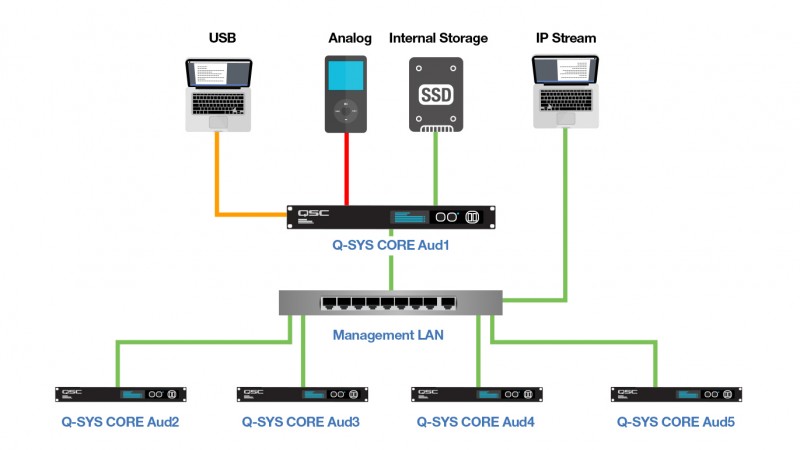Alternative Methods for Distributing Pre-Show Audio
It’s not uncommon to insert some pre-show music into the auditorium to kill the awkward silence before the trailers roll. Classic methods for delivering music to the audience as pre-show filler have been to put a local CD/MP3 player at each auditorium or to have a centralized player and distribute the unbalanced signal with transformer based distribution hardware. Input methods to the cinema sound processors are typically unbalanced analog stereo signals over RCA connections or 3.5mm stereo jacks. This has been the way to handle preshow for a long time, but it’s not uncommon to battle with hum and buzz from the distributed input signal. Traditional non-sync systems rely on a structure of analog audio cable which may be poorly shielded and susceptible to interference from electrical equipment such as lighting dimmers and projector power supplies.
Let’s consider another method, one that likely doesn’t require pulling any new wire. In any digital multiplex there already exists a common link between all auditorium equipment – the management Ethernet network. What if we could broadcast digital audio on this local area network? What if our cinema audio processor could be its own music player? Then we wouldn’t have to worry about hums and wouldn’t need extra playback equipment or distribution boxes.
Q-SYS Core processors are capable audio playback devices used for background music distribution (BGM) in large scale venues like theme parks, casinos, and hotels. Let’s explore some of the features that can help us in the quest for better non-sync in a cinema.
Any Q-SYS Core model can store digital audio files internally, handle playlist management, and support a variety of file types (WAV, MP3, FLAC). Even more, they can either transmit or receive multicast audio streams, so one Q-SYS Core could stream out to many others. Or a computer with software like VLC Media Player running could be used to transmit multicast audio to a multiplex full of Q-SYS Cores that are subscribed. You can even pass audio into a Core with USB and transmit that signal out.
An added benefit of the networked distributed audio system is the ability to integrate paging and communications to the facility. A single microphone can easily be broadcast through the network and deliver audio to any endpoint.
Just because you’ve delivered your non-sync audio in a traditional way (maybe even since it became a tradition) doesn’t mean you shouldn’t explore the Q-SYS option. Take a look at this video and see if the Q-SYS audio player and Core processor might end your quest for better non-sync.
Click here to view the Q-SYS Design file for easier implementation.

Jay Wyatt
Latest posts by Jay Wyatt (see all)
- Creative with Plugins - October 16, 2020
- Rethink Your NonSync - April 9, 2020

